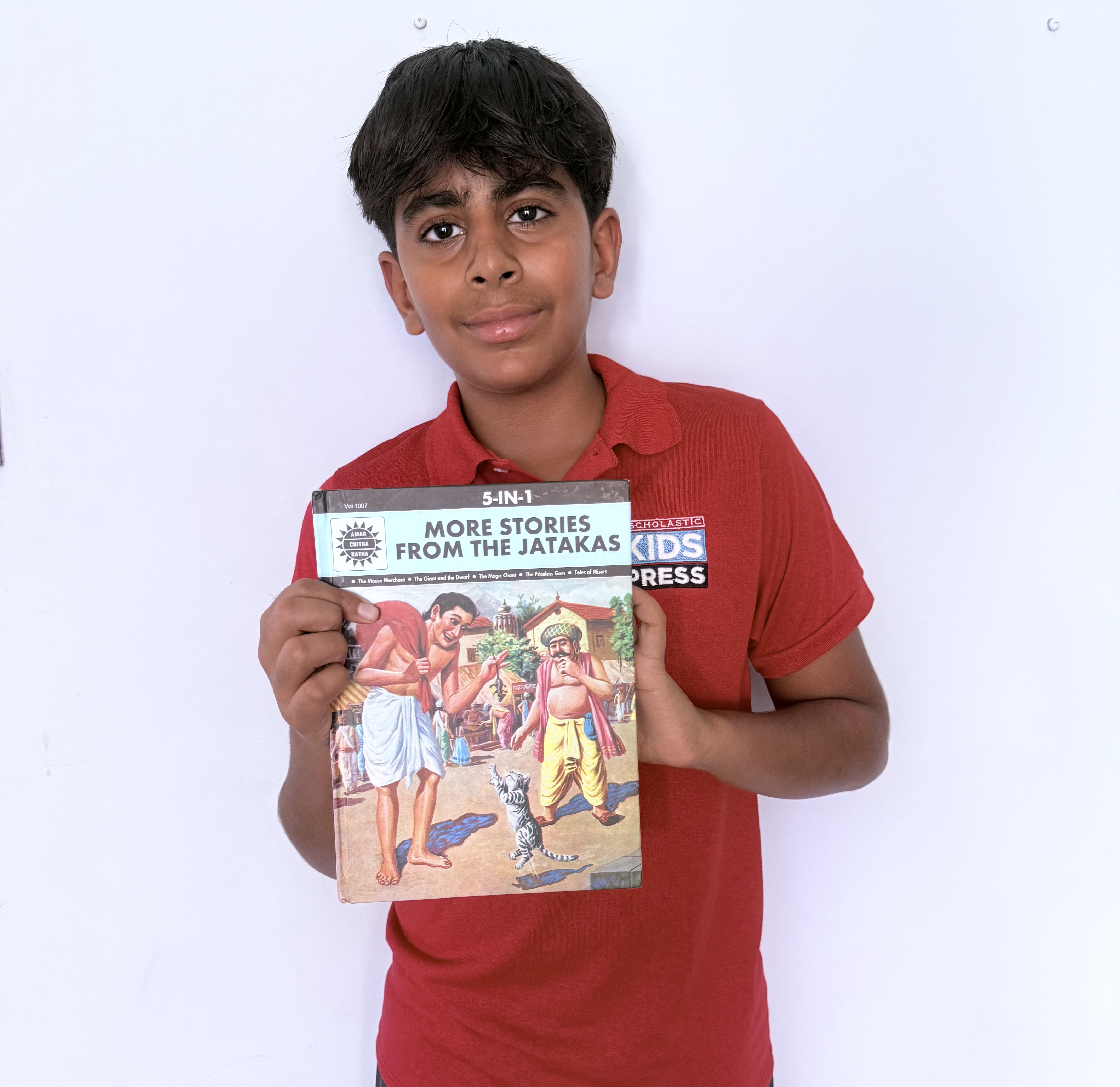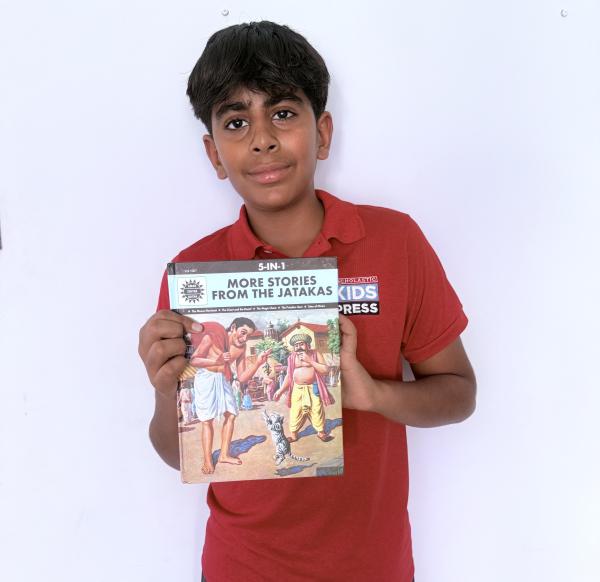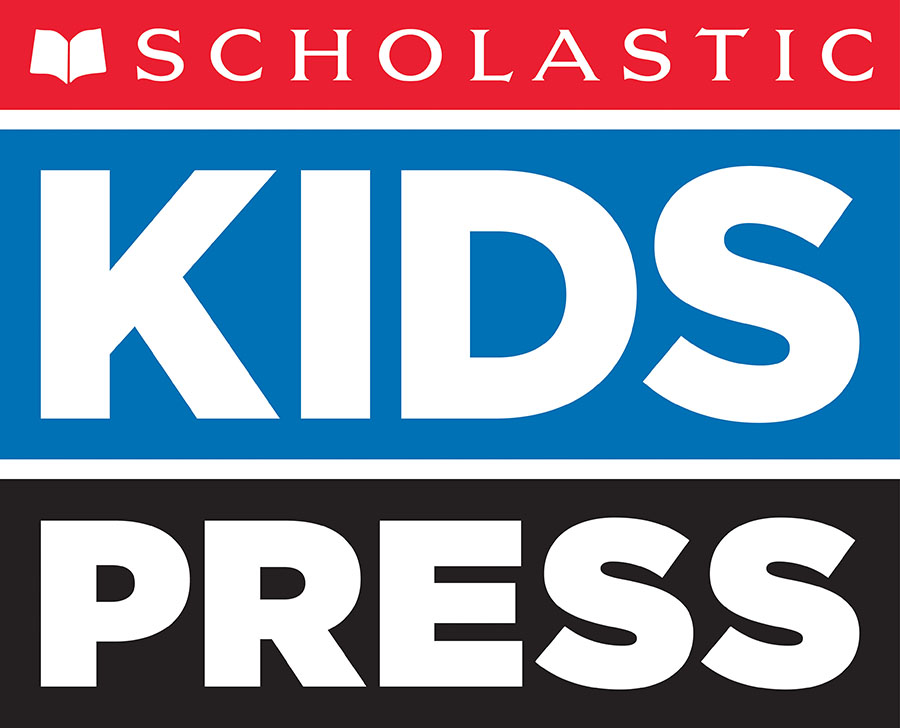KID REPORTERS’ NOTEBOOK
Making Reading Indian Myths and Stories Cool Again


Aarish holding a copy of an ACK comic (photo credit: Sonia Hirdaramani)
Reading allows children to fuel their imagination and escape into magical places or different worlds. Amar Chitra Katha (ACK), an Indian comic book publisher based in Mumbai, allows South Asian children, or children of South Asian descent, to do exactly that with an additional benefit – learning about their cultural heritage. The Indian publishing house’s products include comic books and graphic novels full of Indian epics, mythology, classics, fables, tales and biographies.
The Publishing House
ACK’s Founder, Anant Pai, began writing and publishing these works after being disappointed that Indian children on a popular gameshow could answer questions on Greek mythology but struggled with those on Indian culture. Founded in 1967, his first Indian comic was based on the Indian God, Krishna, and by the late 1970s ACK achieved peak circulation, selling 700,000 copies a month. Tragedy struck in 1994 when a fire broke out in the ACK office, destroying artwork and many books. ACK fans came to the beloved brand’s aid when asked and shared spare copies to help rebuild its library.
In addition to teaching Indian children, kids in the Indian diaspora were also able to access these books around the world, offering a fun and entertaining way for them to reconnect with their roots. Manisha Manglani, who was raised in Hong Kong, remembers the excitement of relatives bringing stacks of books as gifts from India. “We couldn’t wait to read them. The adventures awaited me! If it were not for those books, I would not know as many stories about my heritage as I do. The stories that our parents told us couldn’t capture our imagination in the same way that the visual medium did,” said Manglani.
ACK’s Reach and Impact
Today, ACK comics are translated into more than 20 languages and sold in over a thousand bookstores across India. In order to keep these stories interesting for kids, ACK constantly reinvents itself and uses different concepts and mediums to reach its evolving reader base. Digital inking allows an infinite number of colors to choose from for artwork. Amar Chitra Katha Junior, for example, are stories specifically written for three- to seven-year-olds. ACK is also supplementing its printed comics with audiobooks, YouTube and television series through collaborations with Zebu Animation Studios and Applause Entertainment respectively.
Reena I. Puri, Executive Editor of Amar Chitra Katha, said that, in the future, she would like to focus on stories about changemakers in society because she is aware of the impact these inspiring stories have on young minds. She would like to highlight stories that bring people of different genders, ethnicities, races and religions together by breaking down walls.
However, her favorite stories to tell are still the timeless fables of the country. She enjoys the process of researching folktales from different villages across India: “What tribe has the story come from? What kind of clothes do they wear? What do they eat? How do they speak?” These details not only make the story more accurate, but also more interesting for the reader. The most fun part for her comes next – reimagining the story for a modern audience.
Poised for Success
ACK’s comic book style is well-positioned for shortening attentions spans in this era of digital and social media. ACK stories are oftentimes shorter than traditional storybooks and the illustrations are gripping to keep the reader engaged. Puri divulged that the Government of India has approached ACK to possibly use comic book style to teach children about complex subjects such as elections or the Constitution of India.
The recent popularity of Japanese graphic novels, manga, is evidence that the joy of reading can transcend cultures: Noted philanthropist, Nita Ambani, recently said “Let our Amar Chitra Kathas be the next Harry Potters. Let our epics – Ramayana and Mahabharata, light up the silver screens of the world. Let our stories inspire generations to come ... because culture is not just a reflection of who we are. It is, in fact, a powerful tool to shape who we become.” Reading molds the thought processes of young ones which therefore shapes the future of our world.
